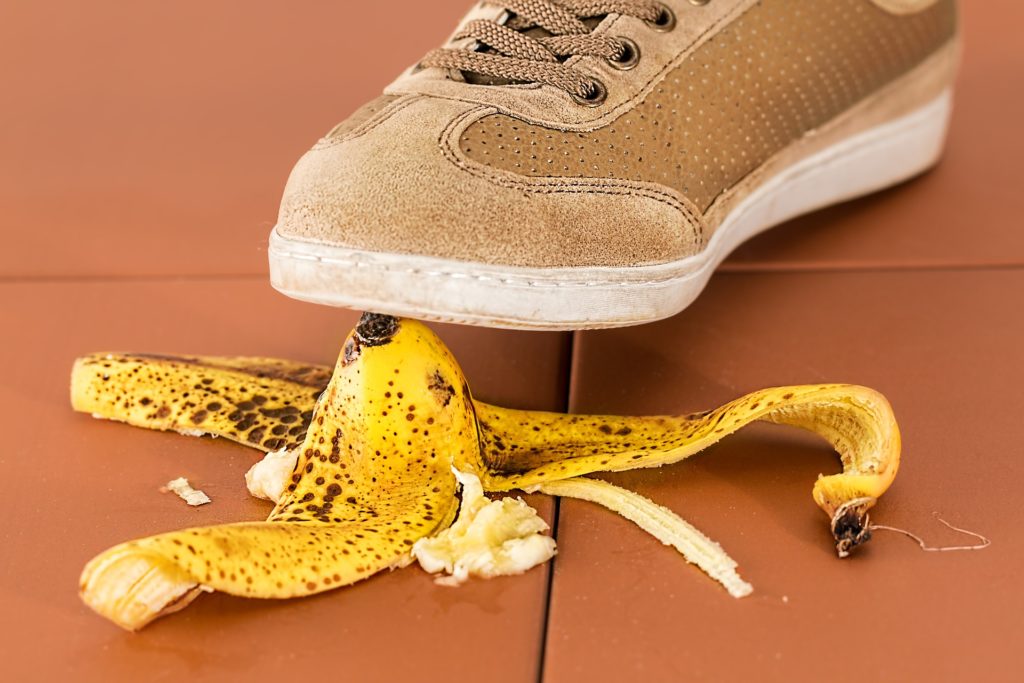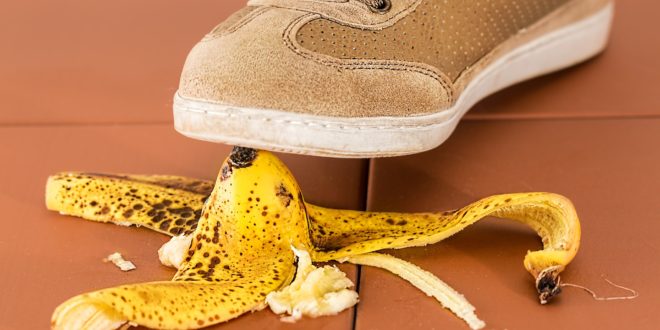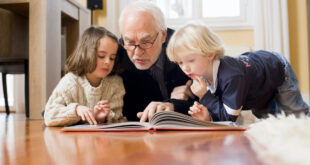 Older adults hear about falls… a lot. Not only does age increase your risk of falling and incurring a major injury (or worse), but so many adults in their 40s to 60s help care for aging parents who are at an even higher risk of falling due to mobility issues and chronic illness.
Older adults hear about falls… a lot. Not only does age increase your risk of falling and incurring a major injury (or worse), but so many adults in their 40s to 60s help care for aging parents who are at an even higher risk of falling due to mobility issues and chronic illness.
Even a seemingly harmless stumble can result in injuries like sprains, bruises, head trauma, a broken hip, and hyperextended elbow. For essential tips of preventing falls and safely getting back up in the event of a fall, don’t miss this quick guide:
10 steps to help prevent falls
There are so many fairly simple steps you can take to prevent falls including:
Exercise regularly to both build strength and maintain strong balance and coordination skills
Get your vision and hearing routinely checked
Check medicines for side effects like dizziness, low blood pressure, and tiredness
Install safety rails and grab bars in the shower/bath, around stairs, etc.
Clear clutter and trip hazards from the floor, i.e. large unused furniture, appliance cords, etc.
Make sure your footwear fits properly and has smooth-bottomed soles for walking (that don’t grip too strongly to the ground)
Use helpful transfer devices that simplify getting in and out of the car (i.e. swivel seat, car caddy) and the bath (i.e. shower chair)
Place non-slip mats in notoriously slick places like the shower and bathroom floor, in front of the sink in the kitchen, etc.
Make lighting both consistent and accessible from room to room so you’re never fumbling through the dark trying to get through your house
Use a mobility aid if your doctor recommends it. Mobility aids don’t have to be a crutch, rather they can truly empower you to keep moving, stay mobile, and support you to prevent debilitating falls
What to do if you fall
While it is critical to know what steps to take to prevent falls and the importance of reporting falls to your doctor (even if they don’t cause an injury), what about when you experience a fall? What should you do to both make sure you aren’t injured as well as get back up safely? Keep these tips in mind:
Do not try to get back up after a fall if you are injured, dizzy, or disoriented. Call for help if someone is in the house with you or use your mobile phone or medical alert device to send out a message that you need assistance.
The best way to assess injuries after a fall while you are still on the ground is to first slow your breathing and heart rate down, try not to move, and get in touch with your body. Is anything throbbing, bleeding, or swelling? If not, slowly roll onto your side and reassess.
From your side, you can transition to a hands and knees position on all fours that allows you to crawl to the closest piece of sturdy furniture like the counter, a chair, or the stairs.
Once you have made your way to a strong support, reach both hands up onto it to steady your arms and then raise your leg up (your strongest one preferably), bend your knee, and place your foot flat to the floor (you will look like you’re down on one knee).
Push up with your hands and leg to raise yourself back into a standing position. Find somewhere near to sit down, catch your breath, rest, and reassess your body.
It may actually benefit you to practice getting up from various positions on the floor while you are perfectly fine and able-bodied so that you are well-versed in the exact actions to take should you experience a fall.
Additional thoughts
If you are a family caregiver who helps a spouse or aging parent, you may be in a position to help them up after a fall. While what you do to help them up may depend on their size and mobility levels, you will always want to check for any injuries prior to moving them. If they are injured, call emergency services right away.
In cases of non-injury, you will want to get another person or two to help you lift your loved one up so that you don’t injure yourself (e.g. pulling your back). When possible, simply assist your loved one with rolling over and getting to a piece of furniture on which they can pull themselves up.









Join the Discussion
Type out your comment here:
You must be logged in to post a comment.